Categories:
The ejection port is a critical component in the functioning of guns, including the AR-15. Its primary function is to expel spent cartridges from the gun after a round has been fired. This seemingly simple task plays a crucial role in ensuring the reliability, safety, and efficiency of the weapon.
When a round is fired, the explosion propels the bullet forward while simultaneously forcing the shell casing backward. The ejection port provides an exit pathway for this casing, preventing it from becoming lodged within the gun’s chamber or action. A malfunctioning or blocked ejection port can lead to serious operational failures such as jams or double feeds, which can compromise both accuracy and reliability.
In addition to facilitating smooth operation, the ejection port also contributes to maintaining a consistent rate of fire. Semi-automatic and automatic guns rely on precise timing mechanisms that coordinate every stage of firing and reloading. Any hindrance in ejecting spent cartridges can disrupt this timing sequence, potentially leading to misfires or other mechanical issues that could endanger the user.
Moreover, efficient cartridge ejection through this port ensures that subsequent rounds are chambered correctly. This is particularly important in high-stress situations where rapid firing may be necessary. The ability to depend on each round being chambered accurately without manual intervention allows users to focus on their target rather than troubleshooting their weapon mid-operation.
From a maintenance perspective, understanding and caring for the ejection port helps prolong the lifespan of any gun. Regular cleaning ensures that debris does not accumulate within this area, which could otherwise impair its function over time.
In summary, while often overlooked by casual observers, the ejection port is indispensable for reliable gun performance. Its role in expelling spent cartridges efficiently keeps weapons operationally sound and ready for use when needed most. Proper attention to its condition directly impacts overall functionality and safety—elements fundamental for any responsible gun owner.
The AR-15 dust cover plays a crucial role in maintaining the gun’s reliability and functionality by shielding the ejection port from external contaminants. This small, often overlooked component acts as a barrier against various forms of debris that could otherwise infiltrate the internal mechanisms of the rifle, leading to malfunctions and reduced performance.
When the dust cover is in its closed position, it effectively seals off the ejection port. This is particularly important when operating in environments where dirt, sand, mud, or even moisture are prevalent. Such conditions can be found in many settings including military operations, hunting expeditions, and shooting ranges. The presence of debris inside the ejection port can lead to several issues such as jamming or misfires.
By preventing these particles from entering the system, the dust cover ensures that each round is chambered correctly and fired without obstruction.
Moreover, during transportation or storage of an AR-15 rifle, there is always a risk of exposure to dust and other fine particles that can settle into open mechanisms. The dust cover mitigates this risk by keeping these elements at bay until it is ready for use again. This ensures that when you retrieve your gun for immediate action or maintenance checks, you do not have to deal with unexpected blockages or cleaning tasks that could delay your operation.
The design of modern AR-15 dust covers often includes features like spring-loaded hinges which automatically snap shut when not in use. This makes them incredibly user-friendly; even if you forget to manually close it after firing or cleaning your weapon, it will likely secure itself as soon as there’s no immediate activity demanding an open port.
In essence, while small and seemingly simple in its function, the AR-15 dust cover significantly enhances operational reliability by safeguarding critical components from environmental hazards. It exemplifies how attention to minor details can make substantial differences in overall performance and dependability of a gun.
The AR-15 dust cover, also known as an ejection port cover, plays a crucial role in maintaining the rifle’s reliability and performance. The primary function of this small yet significant component is to protect the ejection port from debris, dust, and other contaminants that could potentially interfere with the gun’s operation.
When the AR-15 is not being fired, the dust cover remains closed over the ejection port. This simple mechanism acts as a barrier against environmental elements such as dirt, sand, and moisture that can accumulate in adverse conditions. The dust cover ensures that these particles do not enter the internal mechanisms of the rifle, which could otherwise lead to malfunctions or even complete operational failure.
The operation of the dust cover is both straightforward and efficient. It is spring-loaded and hinged on one side to allow for quick and automatic opening when necessary. When a round is chambered and ready to be fired, or when a spent casing is ejected after firing, a small protrusion called a “bump” on the bolt carrier group makes contact with an actuator on the inside of the dust cover.
This interaction causes it to snap open instantly, allowing spent casings to be expelled from the ejection port without any hindrance.
Once open, re-closing the dust cover requires manual intervention by pressing it back into place until it locks securely with its catch mechanism. This ensures that once shooting ceases or during periods when rapid fire isn’t necessary, users can easily re-seal their gun against potential contaminants.
In addition to its protective role, some shooters appreciate that many AR-15 dust covers can be customized with various engravings or finishes for aesthetic purposes without sacrificing functionality. Despite its seemingly minor role in comparison to other components of an AR-15 rifle, this modest device significantly enhances long-term durability and reliability by providing essential protection against environmental factors that could impair performance.
The AR-15 dust cover, an often overlooked yet vital component of the rifle, plays a crucial role in maintaining the gun’s functionality by shielding the ejection port from debris. The choice of materials and the durability of these dust covers are paramount to their effectiveness and longevity.
Dust covers for AR-15 rifles are typically made from either metal or polymer. Each material offers distinct advantages that cater to different needs and preferences among gun enthusiasts. Metal dust covers, commonly constructed from steel or aluminum, provide robust protection against environmental elements. Steel covers are renowned for their exceptional strength and resilience. They can endure significant wear and tear while providing a solid barrier against dirt, sand, moisture, and other contaminants that might enter the ejection port during operation or storage.
Aluminum covers offer a lighter alternative without compromising much on durability, making them ideal for those who prioritize weight savings in their rifle configuration.
Polymer dust covers have gained popularity due to advancements in material science that have enhanced their performance characteristics. High-quality polymers used in these covers are engineered to be highly impact-resistant and corrosion-proof. They offer sufficient rigidity to protect the ejection port effectively while being lightweight and often more affordable than their metal counterparts. Additionally, polymer dust covers can be manufactured with advanced features such as integrated seals or gaskets that provide an even better barrier against fine particles and moisture.
Durability is a key consideration when selecting an AR-15 dust cover because it directly impacts the reliability of the gun under various conditions. Both metal and polymer options must withstand repeated opening and closing cycles without degrading in performance. Enhanced coatings such as Cerakote on metal surfaces can further increase resistance to corrosion and abrasion, ensuring long-term functionality.
Ultimately, whether choosing a metal or polymer dust cover for an AR-15 rifle depends on individual needs regarding weight preference, environmental exposure, budget considerations, and aesthetic choices. Each material offers unique benefits that contribute to safeguarding the rifle’s operational integrity by keeping out harmful debris from its ejection port.
When it comes to installing and maintaining the AR-15 dust cover, precision and care are paramount for ensuring both functionality and longevity. The dust cover, a small yet crucial component, shields the ejection port from debris, thus safeguarding the rifle’s internal mechanisms.
The installation process begins with ensuring your AR-15 is unloaded and cleared of any ammunition. Safety is always a top priority. Once confirmed, focus on disassembling the upper receiver from the lower receiver to gain better access to the ejection port area.
Next, align the dust cover hinge pin with its corresponding hole on the upper receiver. Carefully slide the pin through while simultaneously positioning the spring in place. The spring’s role is pivotal as it provides tension that allows the dust cover to snap open when needed. Ensure that one end of the spring rests against a notch in the upper receiver while winding it correctly around the hinge pin before securing it.
As you finish installing, manually open and close the dust cover several times to confirm smooth operation without any resistance or misalignment. This step is essential as proper alignment ensures effective sealing against external elements.
Regular maintenance of your AR-15 dust cover involves periodic inspections for wear and tear or accumulated debris that could hinder its function. During routine cleaning sessions of your gun, pay special attention to this component.
Begin by gently wiping down both sides of the dust cover using a soft cloth dampened with gun oil or an appropriate cleaner. Avoid excessive lubricant application as this can attract more debris over time. Inspecting for any signs of rust or damage is also crucial; if found, address these issues promptly by either cleaning or replacing affected parts.
Lastly, ensure that all moving parts remain operationally smooth by occasionally applying a light coat of lubricant on hinges and springs without overdoing it—balance is key here.
By adhering to these installation and maintenance tips, you can significantly enhance your AR-15’s reliability under various conditions while extending its service life effectively.
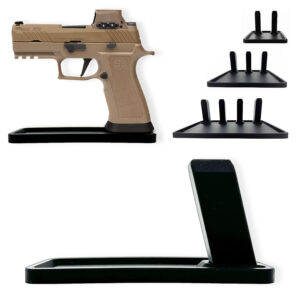

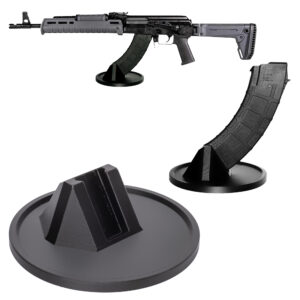

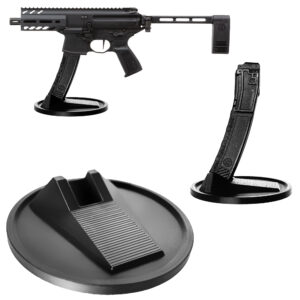
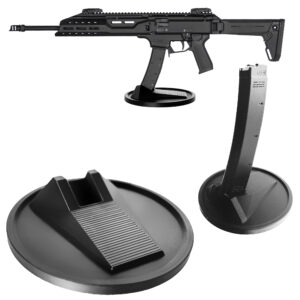

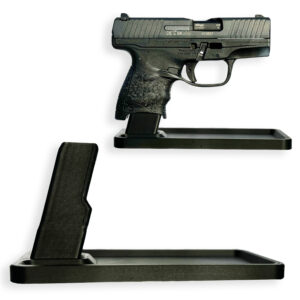
Colt
Colt M4 Carbine
Colt LE6920
Colt AR-15 A4
Daniel Defense
DDM4 V7
DDM4 V9
DDM4 V11
DDM4 ISR (Integrally Suppressed Rifle)
Smith & Wesson (S&W)
M&P15 Sport II
M&P15 Tactical
M&P15T
Bravo Company Manufacturing (BCM)
BCM Recce-16
BCM Recce-14
BCM MCMR Series
Aero Precision
M4E1 Series
AC-15
AR15 Pistol (Various Configurations)
Ruger
Ruger AR-556
Ruger SR-556
Ruger AR-556 MPR (Multi-Purpose Rifle)
Springfield Armory
Saint Victor
Saint Edge
Saint AR-15
PSA (Palmetto State Armory)
PSA PA-15
PSA AR-V
PSA Jakl (AR Pistol)
FN America
FN 15 Tactical Carbine
FN 15 Patrol
FN 15 DMR
Wilson Combat
Recon Tactical
Super Sniper
Protector Carbine
SIG Sauer
SIG M400 Tread
SIG M400 Elite
SIG M400 SDI
LWRC International
IC DI (Direct Impingement)
IC SPR
IC A5
Bushmaster Guns
XM-15 QRC
Bushmaster MOE
XM-15 Patrolman
Rock River Arms
LAR-15 Entry Tactical
LAR-15 Predator
LAR-15 Elite Comp
Stag Arms
Stag 15 Tactical
Stag 15L (Left-Handed Models)
Stag 15 Valkyrie
Noveske Rifleworks
Noveske Gen 4 N4
Noveske Space Invader (AR Pistol)
Noveske Recon
Anderson Manufacturing
AM-15 Optic Ready
AM-15 M4 Carbine
AM-15 Precision Rifle
Adams Arms
AA-15 Piston Rifle
P2 AARS (Adams Arms Rifle Series)
Black Rain Ordnance
SPEC15 Series
BRO Predator
Fallout 15
Diamondback Guns
DB15 Series
DB15CCMLB
DB15EB
Del-Ton Inc.
DTI-15
Del-Ton Echo 316H
Sierra 316M
Windham Weaponry
Windham SRC
Windham VEX-SS
Windham RMCS-4 (Caliber Conversion System)
Christensen Arms
CA-15 G2
CA-15 Recon
CA-15 Titanium Edition
Patriot Ordnance Factory (POF-USA)
Renegade Plus
P415 Edge
Revolution DI
LaRue Tactical
PredatAR
OBR (Optimized Battle Rifle)
LaRue Stealth 2.0
Battle Arms Development
Workhorse Patrol Carbine
BAD556-LW (Lightweight)
Authority Elite Rifle
Faxon Guns
Ascent AR-15
FX-19 (AR Pistol)
Streamline Ultralight Series
KE Arms
KE-15 SLT (Super Lightweight Tactical)
KE-15 Scout Carbine
Primary Weapons Systems (PWS)
MK1 MOD 2-M
MK116 PRO
MK107 (Piston AR Pistol)
ZEV Technologies
ZEV Core Elite Rifle
ZEV AR15 Billet Rifles
Franklin Armory
BFSIII AR-C1
Militia Model
F17-L (Chambered in .17 WSM)
Seekins Precision
SP15 DMR
NX15 Skeletonized Rifle
Havak Bravo
Aero Precision (Additional Models)
EPC-9 (Pistol Caliber ARs)
VG6 AR Rifles
Barrett Guns
REC7 DI
REC7 Gen II
CMMG
MK4 RCE
Resolute 300
Banshee (AR Pistol)
DPMS Panther Arms
Panther Oracle
Panther LR-308
H&K (Heckler & Koch)
HK MR556A1
HK416 (Military Variant)
Rock Island Armory (Armscor)
VR-80 Tactical AR (Shotgun AR Platform)
Troy Industries
Troy SPC-A3
Troy PAR (Pump Action AR)
Wilson Tactical
Tactical Recon AR
Protector Series
F1 Guns
FDR-15 Skeletonized Rifle
BDRx-15 Series
Juggernaut Tactical
JT-15
JT-10 Precision Rifle
AeroSurplus
Surplus AR-15 Rifles (Budget Models)
Thunder Tactical
AR-15 Basic Carbine
Tactical Builder Sets
Radical Guns
RF-15
Forged AR-Series
Dark Storm Industries
DS-15 Featureless Rifles
DS-10 Typhoon
DRD Tactical
Paratus
Aptus AR Rifles
Bear Creek Arsenal
BCA-15
AR Complete Upper Builds
Aero Survival Rifles (ASI)
ASR Tactical Series
Tactical Edge
WARFIGHTER Series
AR-15 Lightweight Rifles
Lone Star Armory
TX15 DMR
TX15 Carbine
HERA Arms
HERA H7
HERA AR-15 Lower Builds
IWI (Israeli Weapon Industries)
Zion-15
DRD Tactical
Tactical Modular Rifles
Quick-Takedown Rifles
V Seven Weapons
1776 Rifle
Hyperlite Rifle
Core Rifle Systems
Core15 Tac III
Core15 Patrol Rifle
Armalite (Original AR-15 Creator)
M15 Tactical
M15 A4 Carbine
DEF15 (Defensive Sporting Rifle Series)
PSA (Palmetto State Armory Additional Models)
PSAK-47 Hybrid (AR-AK Style Hybrid)
PSA Dagger (Pistol Caliber Configurations)
Odin Works
OTR-15
Odin Recon Rifle
Maxim Defense
MDX-508 PDX (Compact AR Pistol)
MDX-510 Rifle